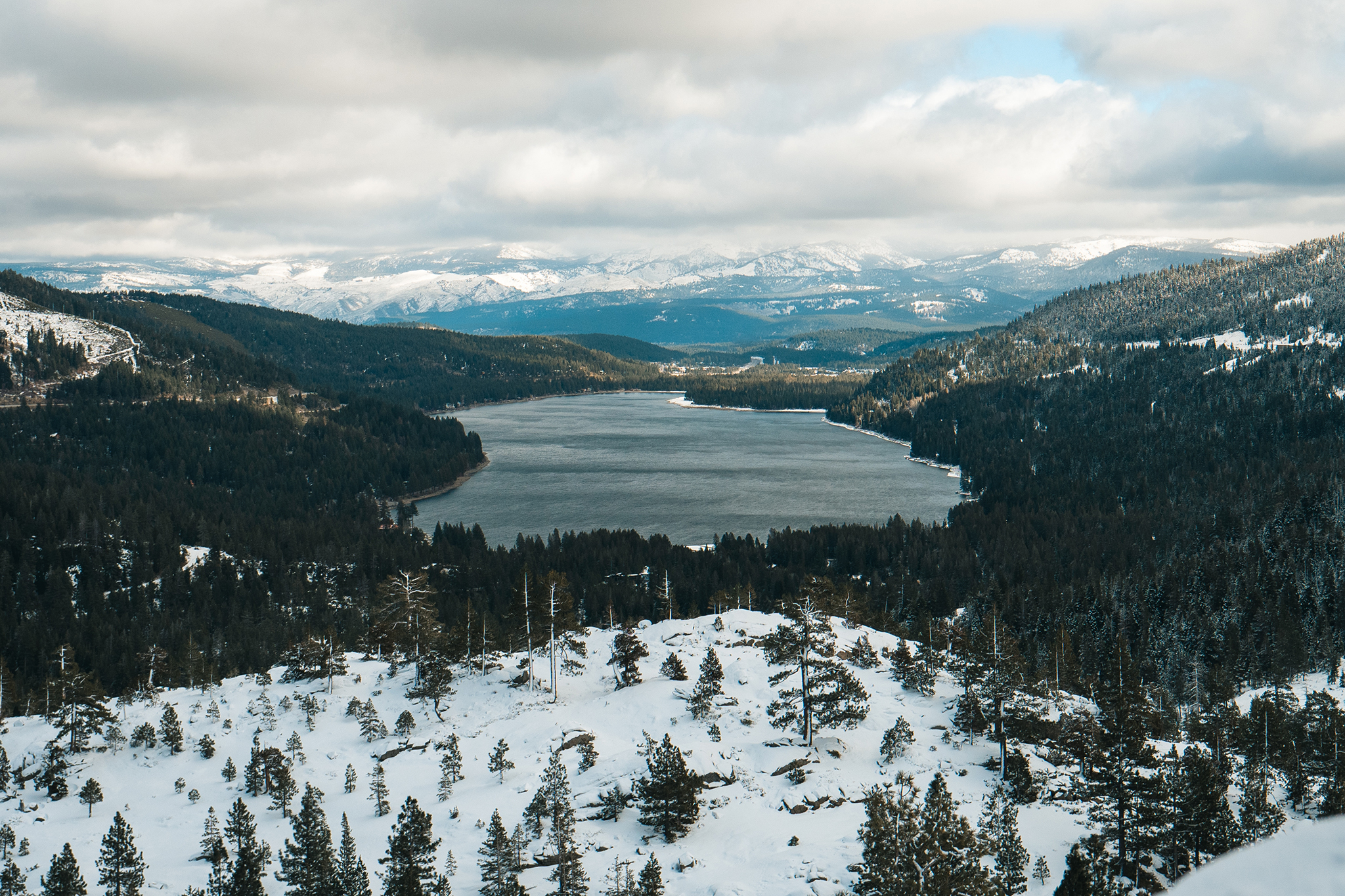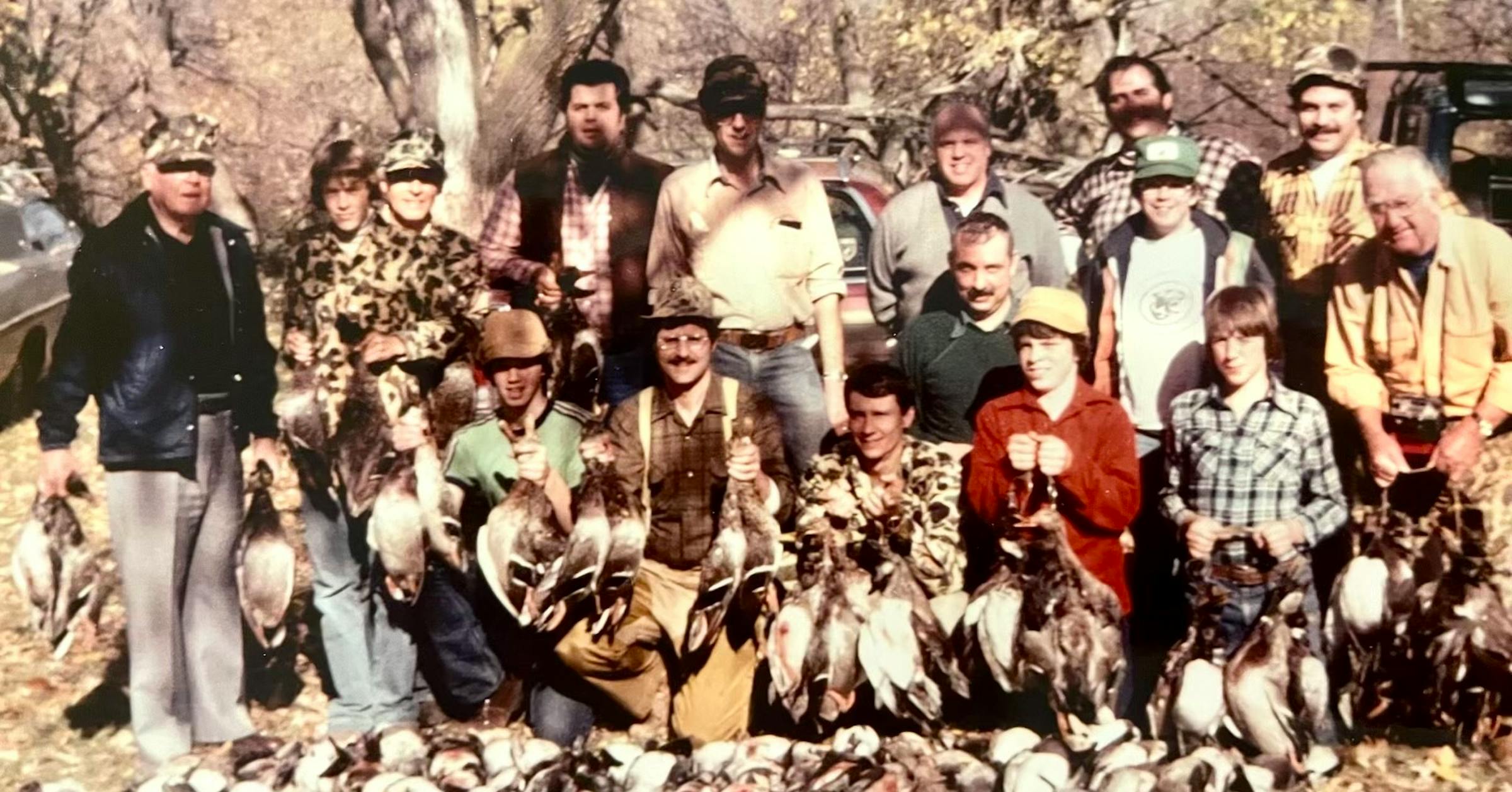
It was late fall in 1844 when a group of pioneers, horses, oxen and wagons arrived on the shore of a beautiful lake embedded below the wall of the Sierra Nevada. Snow had already accumulated on the ground. River crossings were ice cold. The animals were weary and ragged. But the group had hope. They’d already traveled for months, walking day after day alongside the wagons. Upon reaching the Sierra Nevada, they knew they were close to the Sacramento Valley, a destination that had lured them across the continent, but cold temperatures and shorter days were a foreboding reminder that time was not on their side.
This was the Stephens-Townsend-Murphy Party, the first European Americans to cross the Sierra Nevada with wagons. All 52 people survived the journey to California, including two infants who were born on the westward journey.
“They were the original pioneers that proved that you could move wagons over the Sierra Nevada,” said David Antonucci, a Tahoe historian and author.
Advertisement
Article continues below this ad
Yet, the incredible success of the Stephens-Townsend-Murphy Party has been largely forgotten, overshadowed by the gruesome story of the Donner Party. Today, an endless stream of traffic speeds over Donner Pass on Interstate 80, while swimmers dive into Donner Lake. On the east end of the lake, Donner Memorial State Park faces the granite cliffs that step up toward Donner Summit. The history of the Donner Party is imprinted on this region, not because they were the first European Americans to make it, but because their story of starvation, cannibalism and survival was the most sensational.
But in November 1844, when the Stephens-Townsend-Murphy party finally arrived at what we now call Donner Lake, they knew it as Truckee Lake.
The wagon party decided to split up, increasing their odds of reaching Sutter’s Fort. On Nov. 14, a group of six people left the party on horseback and followed the Truckee River to its source at Lake Tahoe, which was then known only to the Washoe Tribe as “Da Ow,” meaning “lake.”
Advertisement
Article continues below this ad
Three men stayed at Truckee Lake to guard a stash of the group’s belongings. The rest — men, women and more than a dozen children, including a newborn baby and a pregnant mother — trudged ahead to find a way over the pass with wagons and oxen.
This week, a group of endurance athletes are hoping they can shine a much-deserved spotlight on the Stephens-Townsend-Murphy Party by embarking on a historical expedition that will trace 120 miles of the route the six horseback riders took across the Sierra Nevada.
The modern day expedition is led by longtime Sierra Nevada foothills residents and ultrarunners Bob Crowley and Tim Twietmeyer. Both work in the tech industry and have competed in the 100-mile Western States Endurance Run that crosses over the Sierra Nevada, starting at the bottom of Palisades Tahoe ski resort and ending in Auburn. The two friends are also self-described history buffs with a love for historical novels. On long runs together, they’d spend hours talking about the books they were reading about the American West. Coincidentally, they were reading Daniel James Brown’s book about the Donner Party, “The Indifferent Stars Above,” at the same time, and it was in their discussions about the book that an idea struck to run the same routes as settlers took on their journey west.
Advertisement
Article continues below this ad
Those conversations on the trail led to their first expedition in 2020, following a group that split off from the Donner Party and traveled on snowshoes to find help, known as the Forlorn Hope group. Crowley and Twietmeyer recruited two other ultrarunners — Elke Reimer and Jennifer Hemmen — to join them. Since the group’s first expedition, they’ve also retraced routes taken by other historical figures, including the famed mailman Snowshoe Thompson and the Grosh Brothers, who struck silver in Nevada.
“Each one of these stories, we’ve tried to bring a little bit more depth to it and a little bit more awareness of why it was important,” Twietmeyer said.
Crowley and Twietmeyer said it took years to piece together the route for their first expedition following the Forlorn Hope route. “We chipped away at it and felt we put enough of the jigsaw pieces together to plant a flag and say, ‘We think we have a pretty good idea where they went,’” Crowley said. Along the way, the group unearthed stories about individuals who made the incredible journey across the West. “We were astounded at what they encountered and endured,” Crowley said.
Their next expedition is centered on unearthing the route the Stephens-Townsend-Murphy Party took, including tracing the path of the six horse riders and discovering the location of the survivors camp where the women and children spent several months that brutal winter, waiting for help to come.
Advertisement
Article continues below this ad
“It’s such a great story in the fabric of the United States, of how the West was opened up,” Twietmeyer said about the Stephens-Townsend-Murphy Party.
The Stephens-Townsend-Murphy Party “opened the California trail,” Twietmeyer said, “which made California what it is today. All those people who came in became doctors, they became farmers and land owners and entrepreneurs 175 years ago.”
Finding the historical waypoints of the Stephens-Townsend-Murphy Party, however, has been a daunting challenge, for the same reason that their entire journey was overlooked by history: The routes are largely unknown and forgotten.
“Nobody knew what the routes were exactly,” said Bill Oudegeest, president of the Donner Summit Historical Society and author. “People made guesses. But [Crowley and Twietmeyer] have gone into all kinds of primary and secondary sources. They’ve been out using common sense: If they were immigrants or rescuers, how would they have gone?”
Advertisement
Article continues below this ad
To piece it all together, Crowley and Twietmeyer built a database of diaries, maps, books, archeological reports, field surveys and newspaper clippings and used artificial intelligence to speed up their research. They expanded their network to find historians who have spent years studying the Stephens-Townsend-Murphy Party. They took this information and then went into the mountains, using their ultramarathon experience to reach remote places in the Sierra and link the route together, step by step.
Their upcoming expedition, called Survivors and Heroes, is set to embark Sept. 29 from Donner Memorial State Park. The group will be posting updates and tracking their journey on their website. Because the route was done on horseback, Crowley and Tweitmeyer’s group decided to travel part of the way on horses, too. They recruited two accomplished equestrians to their expedition group: Hal Hall and Kassandra DiMaggio, both of whom have incredible records of long-distance equestrian riding. They will start by riding horses to Lake Tahoe, along the ridge above the Truckee River, avoiding the cars speeding on Highway 89 below. But in 1844, the original horseback riders — a group that included four men and two women, some of whom were teenagers — would have ridden along the Truckee River.
Advertisement
Article continues below this ad
BEST OF SFGATE
History | Why a wealthy banker blasted a huge hole in a Bay Area cliff
Local | There’s a mansion hidden directly under the Bay Bridge
Culture | Inside the Bay Area’s cult-like obsession with Beanie Babies
Local | The world’s last lost tourist thought Maine was San Francisco
Get SFGATE’s top stories sent to your inbox by signing up for The Daily newsletter here.
The Stephens-Townsend-Murphy Party were not the first white people to lay eyes on Lake Tahoe. But historians believe the six riders were the first to stand on Lake Tahoe’s shoreline. From the mouth of the Truckee River, they traveled south and down Tahoe’s west shore, where several steep canyons and drainages lead up and over the Sierra Nevada crest. According to Antonucci, the route the Stephens-Townsend-Murphy riders took was in all likelihood up McKinney Creek to Burton Pass, near today’s popular Rubicon Trail, frequently traveled by off-roaders.
“If you were in the middle of Lake Tahoe, looking west, you’d see the saddle is most gentle at McKinney Creek,” Crowley said. “It’s the least amount of climbing and elevation gain and loss, and that’s where they went in.”
Burton Pass was an ancient route used by the Washoe and Maidu people, Antonucci said. The six riders almost certainly encountered Indigenous people, who likely directed them on their journey.
Advertisement
Article continues below this ad
“Once they got up into Lake Tahoe, they would have been helped by any Washoe people that were still up in the Tahoe basin at that time,” Antonucci said, noting that most of the Washoe people had likely been making their way to lower elevations at that point in the year.
This wasn’t the only time Indigenous people helped the Stephens-Townsend-Murphy Party, either. Earlier in their journey, Antonucci says the party received direction from a Paiute chief, whom the settlers called Chief Truckee. They also were likely assisted by the Maidu people in the Sierra foothills. The guidance from Indigenous people was key to the Stephens-Townsend-Murphy Party’s success, even though the white settlers gave no credit or admission to Indigenous people for the help: “It was remarkable what they did, but they didn’t do it alone,” Crowley said.
Notably, the Stephens-Townsend-Murphy Party arrived in California a couple of years before the violent genocide settlers waged against Indigenous people, which began in the late 1840s.
Advertisement
Article continues below this ad
Next week, after Crowley and Twietmeyer’s group reaches Lake Tahoe, they will shift from horseback to foot as they travel up and over 7,140-foot Burton Pass. Then the group will descend nearly 6,000 feet down the western slope of the Sierra Nevada to the Sacramento Valley, eventually transitioning back to horses and following the American River watershed into Auburn.
The original horse riders arrived at Sutter’s Fort on Dec. 10, 1844, completing their journey in 26 days.
Crowley and Twietmeyer’s expedition is expected to take five days, and afterward, they’re planning a celebration at Crooked Lane Brewery in Auburn, a stark contrast from the welcome the Stephens-Townsend-Murphy Party received at Sutter’s Fort. The pioneers hardly had a moment to recover before they were recruited to fight in the Mexican-American War. They also needed to return to the Sierra Nevada to save the rest of their party, who were still stranded in the snow.
Back at Donner Lake in November of 1844, after the six horse riders departed for Lake Tahoe, the two dozen who remained faced their own moment of bravery and heroism. Winter was fast approaching, and the Stephens-Townsend-Murphy Party recognized the urgency needed to cross the mountains and survive. They also realized they couldn’t take many of their belongings with them, so they decided to cache them at the lake, likely thinking they’d retrieve their belongings later. A teenager named Moses Schallenberger volunteered to stay at Donner Lake with two other men to guard the group’s belongings, while the rest of the party carried on.
Advertisement
Article continues below this ad
The pioneers slipped through the granite cliffs and crevices and climbed the pass, sometimes hoisting wagons up the rock walls with oxen pulling on chains from above. “There was only one way up and they’d found it,” writes Oudegeest in a recent article he penned about the Stephens-Townsend-Murphy Party for the historical society’s newsletter. It took them five days to make it to the top of the summit, where their feat was met with more snowfall.
On Nov. 28, the wagon train made it as far as the banks of the Yuba River, at Big Bend — a waypoint modern travelers may recognize on Interstate 80.
Exhausted, the party stopped and realized they’d reached another crossroads. More snow was coming, but miles of rugged terrain rolled ahead. Another decision was made: a group of men would press forward while the women and children would stay at Big Bend with the oxen, in a small cabin they’d built with no floor, door or insulation, according to Oudegeest. They called it survivors camp. No one knows for sure where the survivors camp is located, but Crowley and Twietmeyer have been working with historians to find it. One clue comes from four graves that were later dug on the site by people that came after the Stephens-Townsend-Murphy Party.
“It’s cold, there’s less and less food, keeping clean is extremely difficult,” Oudegeest said, describing the conditions the women and children faced. “Imagine what happened when the storms came through. It must have been miserable.”
Advertisement
Article continues below this ad
And yet, they survived. More than that, the pregnant woman gave birth to a daughter at the cabin. The newborn daughter was named Elizabeth Yuba Murphy, after the icy river outside.
Meanwhile, the men from the Stephens-Townsend-Murphy Party arrived at Sutter’s Fort in mid-December, reuniting with the horse riders. Their timing coincided with the Mexican-American War, and they were recruited to fight before finally returning to Big Bend in February of 1845 to rescue their families, who were on the brink of starvation.
After the people at survivors camp were rescued, yet another rescue needed to happen: Moses Schallenberger was still at Donner Lake.
When he volunteered to stay behind that November, Schallenberger wrote in his diary that he wasn’t afraid: “I had no fears of starvation,” he wrote. “… I did not suppose the snow would at any time be more than two feet deep, nor that it would be on the ground continually.”
Advertisement
Article continues below this ad
Schallenberger had no idea what kind of conditions a Sierra Nevada winter could bring.
Two others stayed with him and they built a cabin, which, like the one at survivors camp, had no door and no insulation between the logs, according to Oudegeest. More snow came and slowly, but steadily, buried the cabin. Their food supply dwindled. Eventually, the three men left the cabin in a starved mission to save themselves and hike across the Sierra.
Schallenberger couldn’t make the journey through the snow. “I was scarcely able to drag one foot after the other,” he wrote. He turned around and went back to the cabin alone, while his companions carried on. Schallenberger eventually made it back to the cabin, where he waited out the winter in cold, bitter isolation until a rescue mission was launched. His sister, Elizabeth Townsend, was the person who convinced a man named Dennis Martin to go back to save him.
Advertisement
Article continues below this ad
“Not a single soul perished,” Crowley said, reflecting on the legacy of the Stephens-Townsend-Murphy Party. “Which is remarkable in its own right. It says a lot about the leadership and the planning and the grittiness of these people.”
Today, one of the only tributes to the Stephen-Townsend-Murphy Party’s survival and successful crossing over the Sierra Nevada is the wooded hillside that runs above the south shore of Donner Lake: It’s named Schallenberger Ridge.
Two years after Schallenberger spent an isolated winter at his cabin, the Donner Party arrived at the same place. According to Crowley, the Donner Party used Schallenberger’s cabin for their own shelter. Yet, of the 87 members of the Donner Party, only 48 survived that haunted Sierra Nevada winter.
Advertisement
Article continues below this ad



